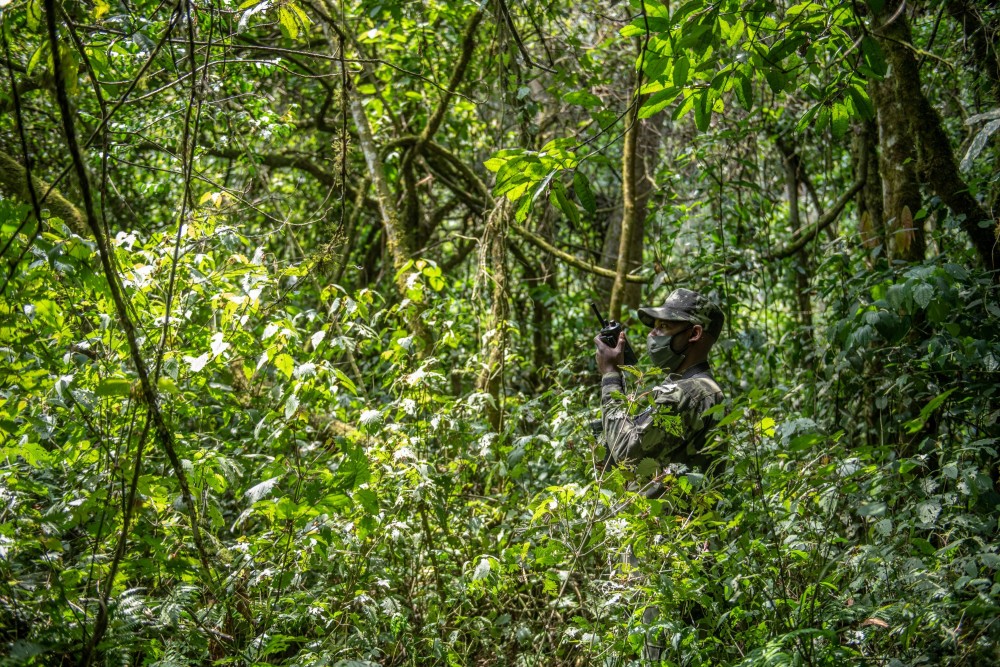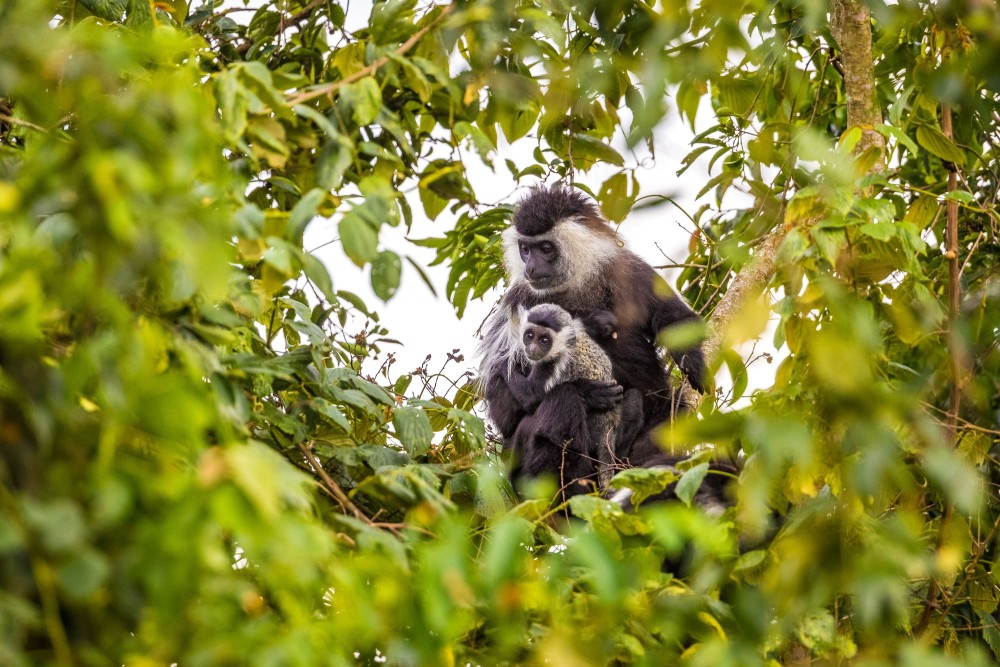Nyungwe National Park is a regional biodiversity hotspot with high levels of endemism. At least 265 of the 1,100 plant species are endemic to these mountains, and of the 345 bird species, 30 are Albertine Rift endemics. Its 85 mammal species include yellow-backed and black-fronted duikers, and numerous small carnivores such as serval cats and African civets. The 13 primate species that live here are impressive, comprising some 12% of all African mainland primate species, including the near-endemic L’Hoest’s monkey and eastern chimpanzee. A single community of 600 Rwenzori colobus has been observed, the largest ever recorded of any primate on the continent.
But Nyungwe’s topography has exposed it to a variety of threats, including poaching, illegal mining, and agricultural encroachment, which have significantly endangered its biodiversity, and prevented it from providing a support system for local communities.
Monitoring and Surveys

Unsustainable levels of hunting have resulted in the possible loss of species. Forest elephant and buffalo are confirmed locally extinct while leopard, golden cat, and giant forest hog have not been seen for many years. However, given the challenges of research and observations in such a dense habitat, it is possible that some species have been missed in previous studies or still exist in very low densities.
The use of technology has helped immensely: Camera traps deployed across the park in 2022 detected 16 mammal species (including chimpanzee, a variety of monkey species, duiker, serval cat and civet). Ongoing camera trapping surveys will further help to gauge species presence and abundance, particularly of the more secretive species without disrupting their behaviour, while also detecting illegal activities. Chimpanzee trackers monitor the habituated chimp populations daily, collating the data digitally to provide insights into behaviour, and helping inform park management strategies.
In collaboration with Bat Conservation International and the Rwanda Wildlife Conservation Association, a critically endangered female Hill’s horseshoe bat was fitted with a VHF radio tag, allowing the team to follow her to a roosting site, where nine individuals were found – the first-ever roost observed by scientists.
Conservation Law Enforcement

The challenges facing Nyungwe include bushmeat poaching, illegal extraction of minerals, fauna, and flora for commercial purposes, and high land scarcity on the periphery of the park, which increases human-wildlife incidence and unsustainable harvesting from the park.
In the past two years of management, through sound conservation law enforcement and community development efforts, illegal activities are being effectively dealt with. All rangers attend refresher courses annually, with human rights – a central element to training, while the new recruits all complete their Basic Field Ranger (BFR) training.
Park management is continuously addressing the biodiversity threat of exotic plants, with an ongoing exercise to map the roughly 500-600 hectares of forest that is covered with exotic species for planned removal and regeneration. In 2022, two hectares of degraded forest near Banda Village were jointly reforested by park staff, eco-rangers and community members.
To help mitigate the effects of human-wildlife conflict, community members are supported with a special compensation fund available for those negatively impacted.
